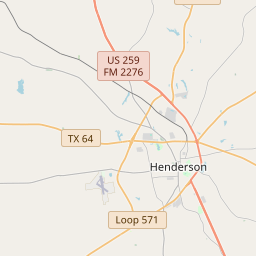Joiner No. 3 Daisy Bradford
Historical marker location:






East Texas Oil Field Discovery Well. Discovery genius was C. M. (Dad) Joiner, 70-year-old Oklahoman who for years believed there was oil in Rusk County. Driller was E. C. Laster. Crew: Dennis May, Dave Cherry, Glenn Pool, Jim Lambert and Dave Hughes.
Joiner's 2 early efforts failed-- one with a jammed bit, one with the drill pipe stuck. The rig was next skidded 300' down slope. "This is as good a place as any," said Laster. Then on May 8, 1929, Joiner No. 3 Daisy Bradford was spudded in. Equipment consisted of an old rotary rig powered by a single-cylinder engine; one 45 hp boiler; one old cotton gin boiler fired with soggy oak and pine chunks by roustabout Dan Tanner. The depression was on, and money scarce. The crew often went without pay. Joiner sacrificed much of his 10,000 acre block of leases. Finally, on Sept. 5, 1930, a drill stem logged at 3536' into the Woodbine Formation showed oil. A better rig had to be brought in. On Oct. 3, 1930, the well blew in and oil went over the crown block. The boom was on.
Cars were bumper-to-bumper on all access roads. Derricks rose in all directions. In its first 30 years, this great field produced more than 3.5 billion barrels of oil. It now covers some 200 square miles-- the largest in the world
As one of the most visible programs of the Texas Historical Commission (THC), historical markers commemorate diverse topics in Texas history, including: the history and architecture of houses, commercial and public buildings, religious congregations, and military sites; events that changed the course of local and state history; and individuals who have made lasting contributions to the state, community organizations, and businesses.
Texas has been a major oil-producing state for over a century. The first big oil discovery in Texas was the Spindletop field near Beaumont in 1901, which set off a massive oil boom that transformed the state's economy and made Texas one of the wealthiest states in the country.
In the early 19th century, American pioneers began to settle in what is now Rusk County. The county was named after Thomas Jefferson Rusk, a prominent Texas statesman and military leader. Rusk County played a significant role in the Texas Revolution, with several local residents participating in the Battle of San Jacinto, which ultimately led to Texas gaining independence from Mexico in 1836.
The discovery of oil in Rusk County in the early 20th century brought a wave of economic development and prosperity to the area. The East Texas Oil Boom transformed Rusk County into one of the largest oil-producing regions in the United States, attracting thousands of workers and businesses to the county. The oil industry continues to be a major economic driver in Rusk County today.
In addition to its oil heritage, Rusk County is also known for its rich cultural heritage. The city of Henderson, the county seat, boasts a historic downtown district with many well-preserved buildings from the 19th and early 20th centuries. The county is also home to numerous historical sites, museums, and events that celebrate its history, including the Rusk County Historical Commission and the Depot Museum in Henderson.
Rusk County Timeline
This timeline provides a glimpse into the major events and milestones that have shaped the history of Rusk County, Texas.
- 1843 - Rusk County established as a county in the Republic of Texas
- 1858 - The town of Henderson becomes the county seat
- 1861-1865 - Rusk County residents participate in the American Civil War
- 1901 - The first oil well is drilled in Rusk County, leading to the East Texas Oil Boom
- 1937 - Rusk County experiences a devastating flood, causing significant damage
- 1964 - Martin Luther King Jr. delivers a speech in Henderson during the Civil Rights Movement
- 1989 - The Texas Legislature designates Rusk County as the "Antique Capital of East Texas"
- 2020 - Rusk County celebrates its 177th anniversary